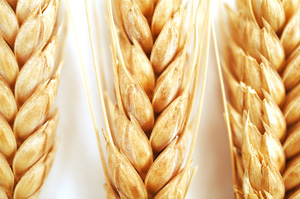Global state of mycotoxins (Part 1)

In feed samples worldwide, the presence of mycotoxins remain a topic of concern. ?Asia remains the region with highest maximum values for most of the tested mycotoxins. These are some of the conclusions drawn from a large mycotoxin survey, carried out by animal nutrition company Biomin.
By Karin Nährer & Paula Kovalsky, product managers Mycofix®, Biomin, Austria
Mycotoxins are a large and growing family of toxic fungal substances produced in plants intended for animal production. They can be produced on a wide range of agricultural commodities and under a diverse range of situations. More than 1,000 different mycotoxins have been identified so far and the number seems to keep growing. Aflatoxins, zearalenone, deoxynivalenol, fumonisins and ochratoxin A are among the most frequently occurring mycotoxins worldwide. As part of its approach towards mycotoxin risk management, Biomin provides regional insights and interpretations of the prevalence of most important mycotoxins in primary feedstuffs through its annual extensive mycotoxin survey. The survey covers 4,218 samples from over 50 countries around the globe. More than 16,300 analyses were conducted to test for the occurrence of the five mycotoxins most frequently found in agricultural commodities intended for animal production. This survey provides an insight on the incidence of aflatoxins (Afla), zearalenone (ZEN), deoxynivalenol (DON), fumonisins (FUM) and ochratoxin A (OTA) in the primary components used for feed which include corn, wheat, barley, rice, soybean meal, corn gluten meal, dried distillers grains (DDGS) and silage, among others.
Overall results
An overview of the distribution of mycotoxins by region of origin is illustrated in the interactive map below. Once again, DON and FUM threaten over half of all samples tested worldwide. Over one-third of all tested samples were contaminated with ZEN and compared to the previous year, the number of samples positive for Afla increased by 5% to a total of 30% (Figure 1). In 2013, 81% of all samples contained at least one mycotoxin and in 45% more than one mycotoxin were found. More than half of all worldwide samples contain DON and FUM (Figure 1). Corn was found to contain the highest concentrations of singly occurring Afla and ZEN in addition to FUM in corn DDGS. In 45% of all samples, more than one mycotoxin was detected. Multi-mycotoxin occurrence is a challenge due to its potential synergistic effects in animals. Field mycotoxins such as DON, FUM and ZEN were the most frequently occurring worldwide. The risk levels of these mycotoxins were also assessed, according to the percentage of samples in the different contamination ranges. The main result from this survey was the presence of the type B-trichothecene DON in 42% of all the surveyed samples at contamination levels above 300 µg/kg. In total, 12.5% of all the feed samples were above the EU guidance values for DON (900 µg/kg) in complementary and complete feedstuffs for pigs (EC, 2006).

Results by region
Figure 2 (from 1A to 1M) shows the prevalence of mycotoxins in different regions worldwide. The following observations highlight the most important findings for each of these regions: Asia remains the region with highest maximum values for most of the tested mycotoxins (Afla, ZEN, DON and FUM). In total, 65% of all samples contained more than one mycotoxin and the highest incidence of ZEN was observed in this region. The highest maximum concentration of all mycotoxins was 29,267 ppb DON in a Chinese barley sample. The highest average Afla concentration was observed in European samples. The incidence of OTA in Europe was lower compared to 2012; however, the average values are about three times higher (16 ppb). The highest concentration of OTA was found in a Spanish finished feed sample at 595 ppb OTA, which significantly exceeds the EU guidance value for complete feeding stuffs for pigs (50 ppb). The second highest maximum DON concentration (18,971 ppb) was observed in an oat sample originating from Finland. At this level, DON poses a high risk for all animal species. In North America, FUM remains the most common mycotoxin, although the incidence was 23% lower compared to the previous year. The highest worldwide average DON concentration was observed in North America (1,303 ppb). These samples would exceed the EU guidance value for complete feeding stuffs for pigs in the EU (900 ppb). South American samples have the highest global average of ZEN at 221 ppb, a concentration that significantly exceeds the EU guidance values for complementary and complete feeding stuffs for piglets and gilts due to their high sensitivity to this estrogenic compound. Also the average FUM concentration (2,422 ppb) was highest in South American samples. In the Middle East, over 50% of all samples showed a co-contamination with more than one mycotoxin. Almost 80% of the total Middle East samples tested positive for FUM and the average levels were 1310 ppb. The results for African samples show a general decline in the mycotoxin occurrence compared to the previous year. Despite the high prevalence of FUM in Africa (86%), the average concentration was lowest worldwide (778 ppb). However, single samples can still contain relatively high concentrations of over 4,500 ppb.
Conclusions
The analysis of the 4,218 samples in this survey gives a clear picture of why mycotoxins are a topic of concern in animal feed. Multi-mycotoxin occurrences continue to be a global threat. Constant monitoring and continual research on the prevention and mitigation of mycotoxin contamination are therefore necessary.A first step towards preventing the negative effects of these harmful substances is the use of good agricultural practices and proper storage conditions. An effective mycotoxin risk management programme is also essential in order to protect animals from the effects that mycotoxins have on health and performance.
Article featured in All About Feed 22 issue 2 2014











